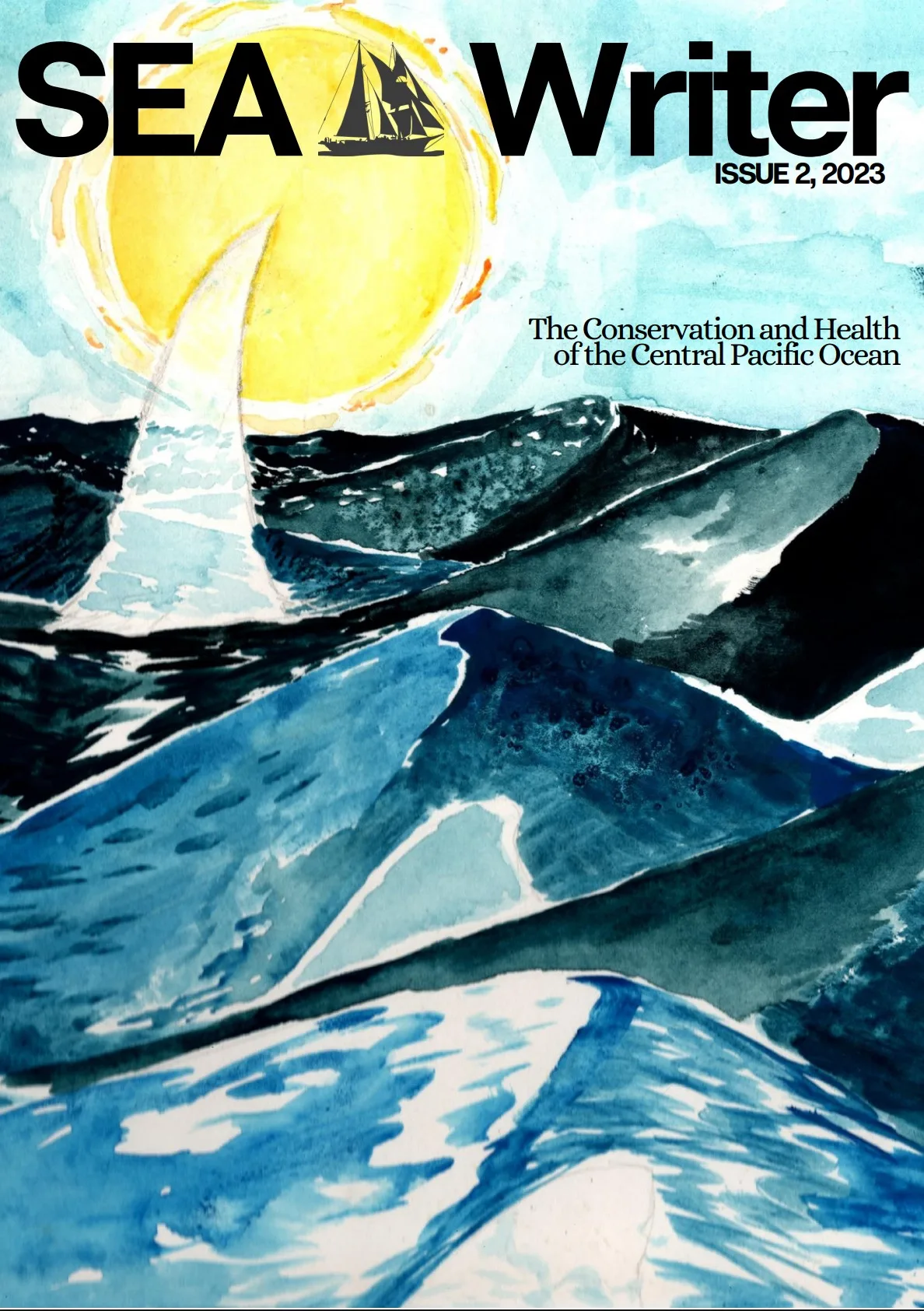News
SEAWriter: Protecting the Phoenix Islands (Issue 2, 2023)

The Conservation and Health of the Central Pacific Ocean
Introduction
On the 7th of June 2023, only the second full day in Woods Hole for the students of class S’310, the Ambassador to the United States from the Republic of Kiribati walked into the classroom. Although Mr. Teburoro Tito, who was also the former president of Kiribati, was wearing a tie and jacket, his demeanor and tone put the students immediately at ease. The meeting felt more like “a hang-out with a distant relative,” as student Sam Barresi put it. Ambassador Tito sang traditional songs from Kiribati but also had a sing along with a John Denver tune. Student Julius Gabelberger presented him with a signed homemade card from everyone, adorned with a painting of a frigatebird, the national bird of his country, and before he was whisked off for various other tours around the campus and on board one of SEA’s ships, the Ambassador managed to make us all feel that our oceanographic research was important and useful—that the voyage ahead had a meaning larger than ourselves.
We were spending three weeks in Woods Hole in preparation for a six-week voyage at sea. The students met the SSV Robert C. Seamans in Honolulu, where aboard was a full staff of scientists, visiting scientists, watch officers, deckhands, and other academic and professional maritime crewmembers, totaling thirty-three people.
The plan had been to visit the Phoenix Islands Marine Protected Area (PIPA), where we hoped to continue our baseline research oceanographic and ecological conditions, just as we had done nearly every summer since 2014, sending our data to the PIPA office in Tarawa and to other partners. But by the time Ambassador Tito came to Woods Hole, we all knew that PIPA was no longer a marine reserve. Political winds and financial needs had shifted back home. Fishing vessels had been let back into the region.
To a new department in the government of Kiribati, SEA had entered a new permit to request permission to conduct research. This permit still active even as we left the dock and began sailing south from Oahu, but in the end we could not get an observer on board in time, so we changed our cruise track to go just to the north, to the marine protected area that borders PIPA, the portion of the Remote Pacific Islands Marine National Monument (PRIMNM) that extends out from Howland and Baker Islands. The PRIMNM was first established in 2009, then expanded in 2014. This portion of the PRIMNM is managed by the United States Fish and Wildlife Service, who gave us permission to sample within the monument’s waters, up to three miles from the shore of these tiny islands, these low tips of sea mounts that tumble steeply down more than 3,000 meters beneath the surface.
Though we were disappointed to not visit the waters of Kiribati and meet the people stationed on Kanton
Island, the waters around Howland and Baker, known as the American Phoenix Islands, are no less fascinating oceanographically, historically, and in terms of current management. This region offers data on the characteristics of marine protected area waters around equatorial sea mounts. And we knew we were learning in real time about geopolitical interactions with marine conservation. We respect the sovereignty and goals of Kiribati, a relatively new government, regaining independence in 1979—a nation whose territorial waters stretch across the equator a similar distance to the width of the United States.
So we sailed and sampled in US waters, sweated below, hauled on lines, cooked, cleaned, and sweat some more under the equatorial sun. As we sailed south toward Fiji, we analyzed our data, and after five weeks and over 4,200 miles, we dropped our anchor off Savusavu Harbor in Fiji.
Throughout the trip, we continued our efforts to learn about the oceanographic and ecological health of the central Pacific Ocean, the current management of these waters, and about the people who have lived and moved through these vast waters for well over a thousand years. Kiribati, along with several other low-lying nations in the Pacific and other parts of the world, are on the very front lines of climate change. Although the I-Kiribati people had nothing to do with the creation of the problem, global warming is currently killing their reefs and sea level rise is inundating their shores and spoiling their already scant freshwater resources.
This magazine, this special issue of SEA Writer, focuses on the health and management of the Central Pacific. This issue is an interdisciplinary reflection of some of our studies, both on shore and at sea.
Ambassador Tito told us that “Any human-made mess must have a human made fix.” If he can stay positive and keep working, we can, too.
On Monday July 31st, a rainy afternoon hundreds of miles from any land, we gathered in the salon of
the Robert C. Seamans and tried to build consensus on what we could do—the result of which is at the end of the magazine.
We thank you for reading.
About SEAWriter
SEAWriter is a student-published magazine, usually created as part of SEA’s Environmental Communications course. Each edition features articles, creative writing, and artwork contributed by program students and faculty. Environmental communication is essential in raising awareness, inspiring action, and bridging the gap between science and society. SEAWriter serves as a culmination of everything students have learned in all their courses and research as well as their field component. Through storytelling and visual expression, students apply their knowledge and creativity to effectively convey environmental messages to a broader audience.